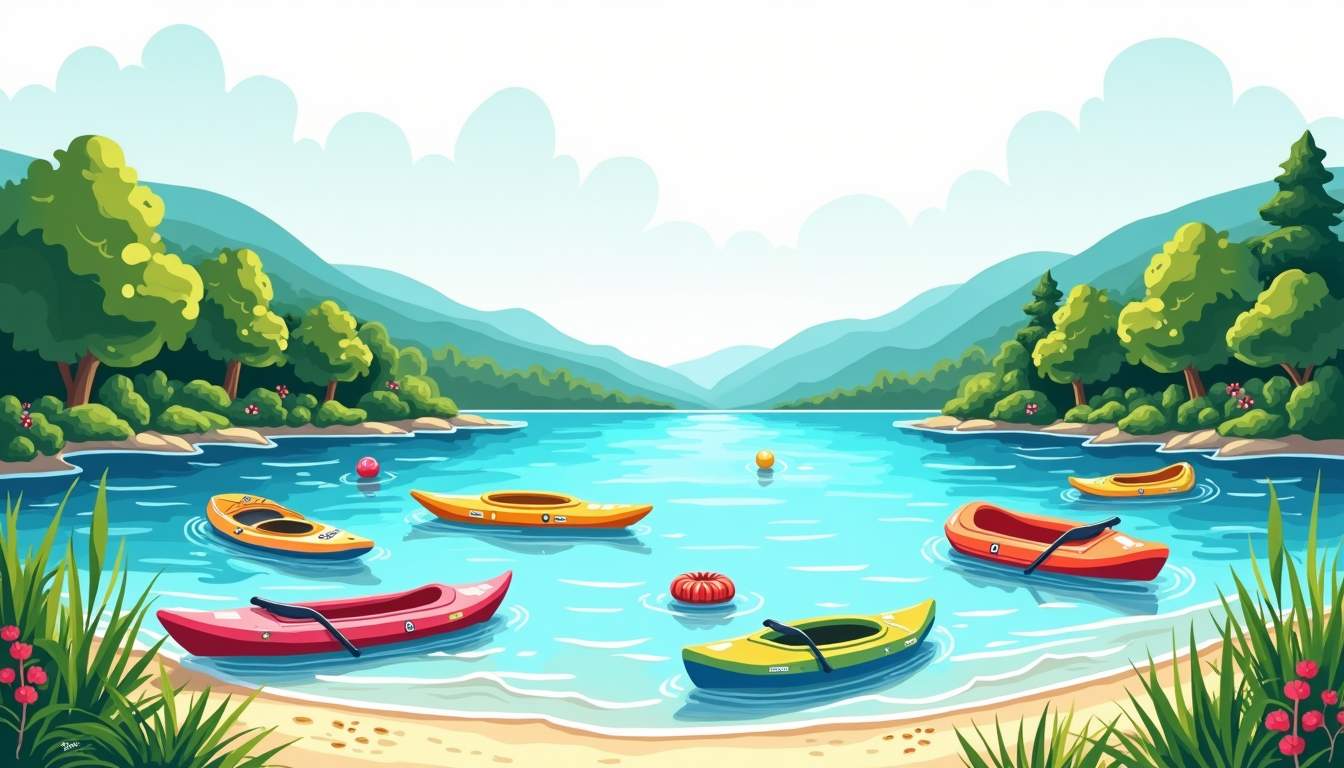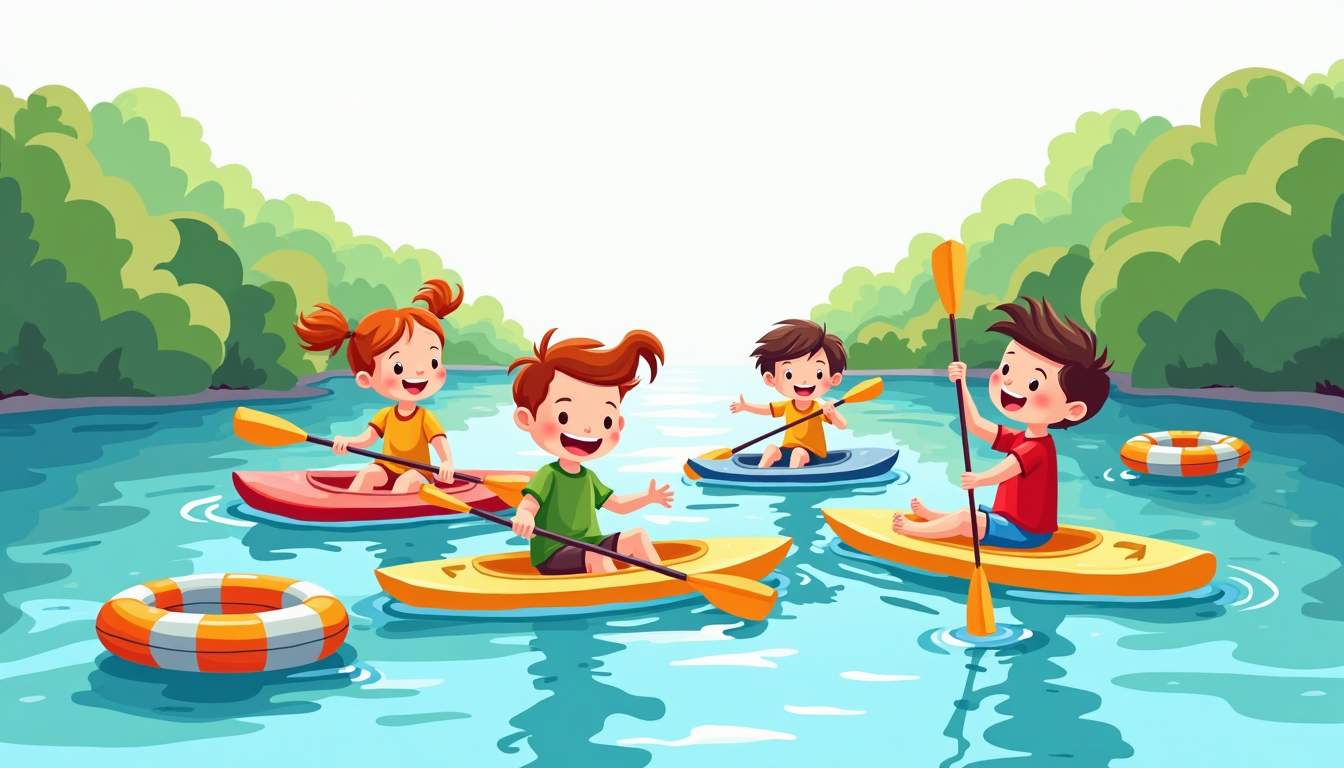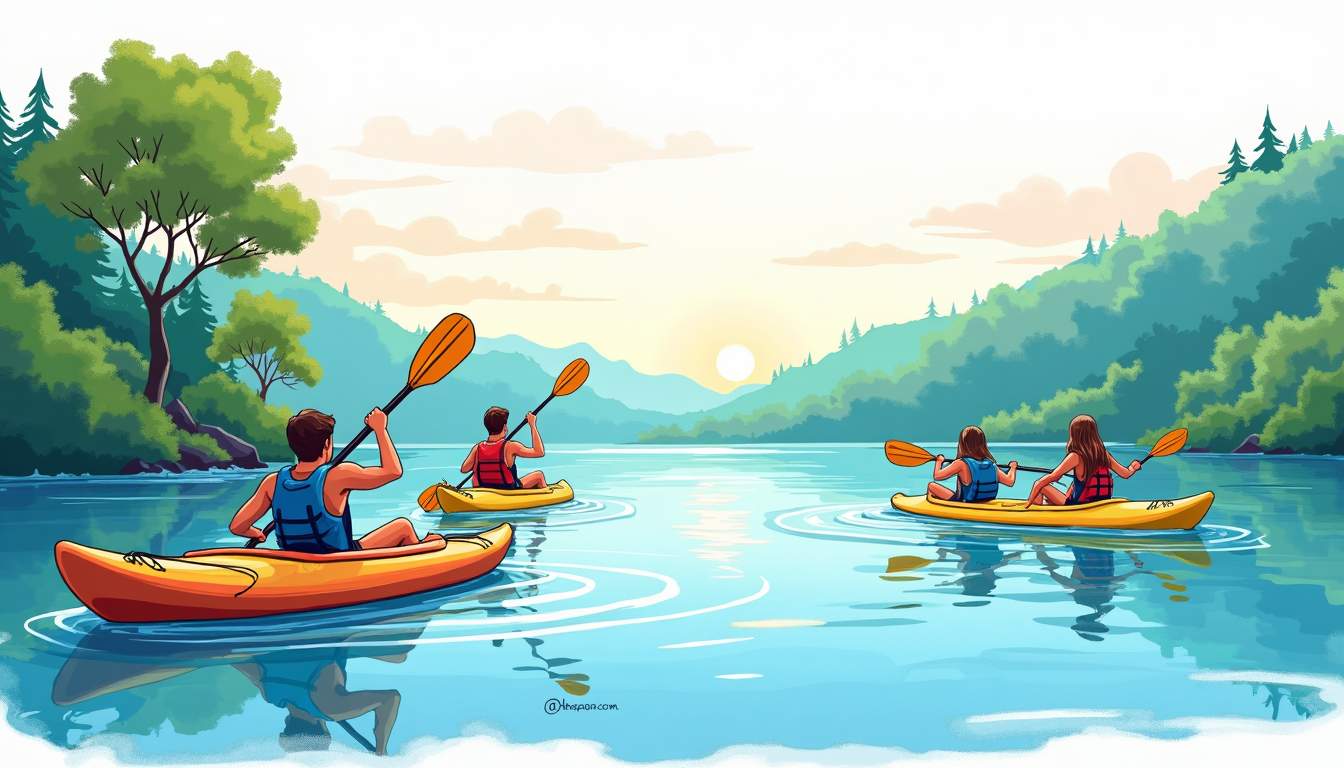
Water invites curiosity, laughter, and a sense of freedom across the lifespan. Whether splashing along a shoreline, paddling a quiet river, or gliding on a wake, water activities can be tailored to match energy levels, skill, and safety needs. This article outlines ideas, tips, and safety reminders to help families, friends, and solo travelers find the right water adventure for every stage of life.
Water carries a universal appeal: it's sensory, social, and often accessible. For young children, a small splash pool becomes a place to explore cause and effect. Teenagers discover independence through surfing, kayaking, or group paddleboarding. Adults use water for recreation, fitness, and stress relief. Seniors often find therapeutic benefits in gentle aquatic exercise and renewed social opportunities. The common thread is that water experiences can be modified to match physical ability, confidence, and goals.
Planning an outing that suits the group's age range unlocks more enjoyment and reduces stress. Choose locations with appropriate facilities, consider seasonal weather and water temperatures, and bring safety equipment suited to participants' sizes and abilities. With thoughtful preparation, a trip to the water can work for toddlers and grandparents alike.
Beyond physical activity, water environments offer unique opportunities for sensory engagement and mindfulness. The soothing sound of waves, the tactile sensation of water flowing over skin, and the changing light reflections all contribute to a calming atmosphere that appeals to all ages. This sensory richness can foster connections between family members and friends, encouraging conversations and shared memories that transcend generations.
Moreover, cultural traditions and local customs often revolve around water, adding layers of meaning to water-centric activities. Whether it’s attending a seasonal river festival, learning traditional fishing methods, or simply enjoying regional seafood specialties by the shore, water provides a backdrop for experiences that enrich social bonds and deepen appreciation for natural heritage. These multifaceted aspects of water help explain its enduring charm across the lifespan.
For little ones, water time is about discovery. Shallow splash pools, shallow beach edges, and supervised backyard tubs encourage sensory play and motor development. Look for calm, enclosed areas where caregivers can stand close, and avoid deep or choppy water. Lightweight life jackets designed for toddlers offer buoyancy and peace of mind, but they are not a substitute for hands-on supervision.

Introduce simple toys like cups, small boats, and floating animals to encourage pouring, sinking, and predicting outcomes. Short, frequent sessions—10 to 20 minutes—are often better than long stretches, because young children tire and chill quickly. Keep a sun hat, rash guard, and quick-dry towel handy, and be mindful of sunscreen that’s suitable for sensitive skin.
Water painting on sidewalks with large brushes, collecting shells or smooth stones along a protected shoreline, and making "rivers" with hoses and gutters are low-risk ways to explore cause and effect. Inflatable pools with non-slip mats or sand-and-water tables invite creative play without requiring full immersion. Always maintain arm's-length supervision and rotate caregivers when needed to prevent lapses in attention.
School-age children can handle longer outings and slightly more complex gear. Swimming lessons remain the top priority for safety and confidence. Once basic skills are in place, options expand to snorkel exploration in shallow reefs, canoeing with an adult, supervised bodyboarding at gentle beaches, and organized group activities like junior lifeguard camps.

Encourage kids to wear properly fitted life jackets when on boats, near deep water, or at the beach if they are not strong swimmers. Teaching basic water safety—such as not swimming alone, identifying lifeguard flags, and recognizing rip currents—builds both autonomy and caution. Parents can make learning fun with games that build stroke technique, breath control, and floating skills.
Swim teams, sailing programs, and youth kayaking clubs offer structured progression and peer motivation. These activities teach not only technical skills but also responsibility, teamwork, and respect for the environment. When signing children up, verify instructor qualifications, group sizes, and emergency procedures. Programs that emphasize gradual skill-building and positive reinforcement boost long-term enjoyment and competence.
Teenagers often seek thrill and independence, which opens the door to more adventurous water sports: surfing, wakeboarding, whitewater kayaking, and diver certification. These pursuits require skill, respect for conditions, and sometimes strength. Structured coaching accelerates progress and keeps risks manageable. For teens new to water sports, start with smaller goals—learning to paddle efficiently, reading tides, or mastering controlled falls—before moving to advanced maneuvers.

Peer groups can be positive motivators but can also encourage risky behavior. Responsible adults should set clear boundaries, ensure proper safety gear (helmets for certain sports, appropriate flotation), and emphasize the importance of checking weather and water conditions. Learning first aid and CPR provides added confidence for all participants.
Outdoor programs that combine adventure sports with wilderness skills promote resilience. A multi-day kayaking trip with experienced guides, for example, teaches navigation, campsite selection, and low-impact camping practices. Challenge-seeking activities should always be paired with adequate training and a culture of safety—knowing personal limits is as important as pushing them.
Adults have broad options depending on fitness goals and lifestyle. Swimming laps is among the best low-impact cardiovascular workouts, while open-water swims add navigational and mental challenges. Stand-up paddleboarding (SUP) offers a full-body workout with minimal impact and is accessible for beginners. Group activities like water aerobics provide social engagement with therapeutic movement—especially appealing for those with joint concerns.
For busy adults, shorter water sessions can fit into a packed schedule. High-intensity interval training (HIIT) in the pool, quick SUP circuits, or a compact lap session are efficient ways to maintain fitness without overstaying. Combine exercise with social time by joining clubs or scheduling recurring outings—consistency is key to reaping long-term benefits.
Not every water outing must be vigorous. Gentle kayaking at sunset, floating on a calm lake, or a leisurely sail can recharge energy and relieve stress. These slower activities still engage the body and offer mental health benefits through connection with nature and rhythmic movement. Balance active and restorative water experiences across weeks and seasons for a rounded routine.
Aging bodies often appreciate the therapeutic properties of water—buoyancy reduces joint load, and warm pools soothe stiffness. Aquatic therapy, water walk classes, and gentle lap swimming help maintain mobility, strength, and balance. Pools with gradual entry or accessible lifts make aquatic activities more approachable for those with limited mobility.
Group classes tailored to older adults foster social bonds and consistent participation. Programs that include balance drills, resistance exercises using water dumbbells, and flexibility routines can improve fall prevention and daily function. Medical clearance is recommended for seniors starting a new exercise regimen, especially when cardiovascular concerns are present.
Check pool temperatures—warmer water may be more comfortable for those with arthritis. Ensure lifeguard presence or a reliable partner system for open-water swims. Use non-slip footwear on wet surfaces and consider shorter sessions with frequent rests. Hydration matters at every age; seniors should sip water regularly even when exercising in warm or humid conditions.
Planning an outing that spans generations requires thoughtful pacing and activity variety. Choose destinations with options: a sheltered bay for calm paddling, a lifeguarded beach with nearby picnic areas, or a lakeside park with paved paths and restroom facilities. Bring layered clothing for changing weather and an array of activities to accommodate differing energy levels—simple games for kids, a book or binoculars for adults who want to relax, and therapeutic floats for seniors who enjoy the water without strenuous effort.
Rotate responsibilities to keep everyone engaged: older children can help set up shade, teens can supervise younger siblings during safe water play, and adults can manage logistics like meals and safety gear. Shared experiences—teaching a grandparent to paddle a short distance or watching a toddler discover the feel of sand—create lasting memories.
Proper gear increases comfort and reduces risk. Essential items include fitted life jackets for non-swimmers, sunscreens rated for water exposure, rash guards or wetsuits for colder water, and safety whistles on boats. For group outings, pack a small first-aid kit, extra drinking water, and a charged phone in a waterproof bag. When venturing onto unfamiliar waters, consult local tide charts, weather forecasts, and advisories about wildlife or water quality.
Boating etiquette and safety are straightforward but critical: ensure everyone aboard has a life jacket that fits, know the location of emergency equipment, and designate a sober operator. For remote trips, let someone on shore know the intended route and expected return time. Learning to read the water—recognizing currents, swell patterns, and changing wind—is a skill that grows with time and experience.
Part of enjoying water responsibly is protecting it. Follow Leave No Trace principles: pack out trash, avoid disturbing nesting areas, use reef-safe sunscreen, and keep a respectful distance from wildlife. If boating, minimize wake in sensitive shallow areas. Teaching conservation-minded habits to younger participants ensures future generations can keep enjoying clean, healthy waterways.
Community stewardship also creates opportunities for multigenerational engagement. Volunteer beach cleanups or local water monitoring projects can be meaningful ways to connect, learn, and contribute. Protecting waterways enhances safety and enjoyment for everyone, from toddlers to seniors.
Water offers an extraordinary range of experiences suitable for all ages—playful, educational, athletic, restorative. Selecting activities that match physical ability, combining safety with growth, and preparing the right gear turns simple outings into memorable traditions. With respect for the elements and consideration for each participant's needs, water can be the setting for family milestones, personal breakthroughs, and quiet moments of renewal across a lifetime.
Embrace a lifestyle where water adventures and luxury living come together. At Tennessee National, enjoy access to a private marina, scenic waterfront dining, and nature trails perfect for family outings across all ages. Whether you’re dreaming of a move-in ready home or a custom build, our premier gated community offers the ideal setting for your next chapter of memorable water experiences. Schedule a Private Tour today and start living the resort-style life you’ve been imagining.